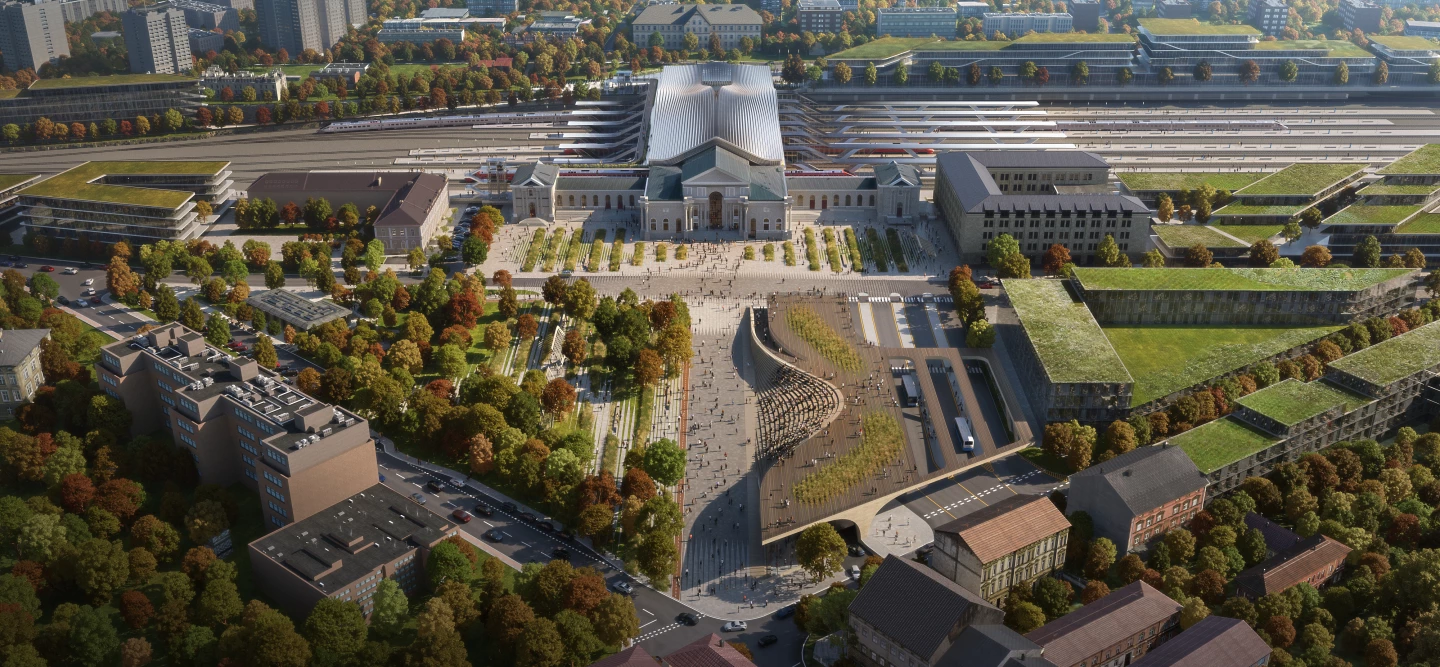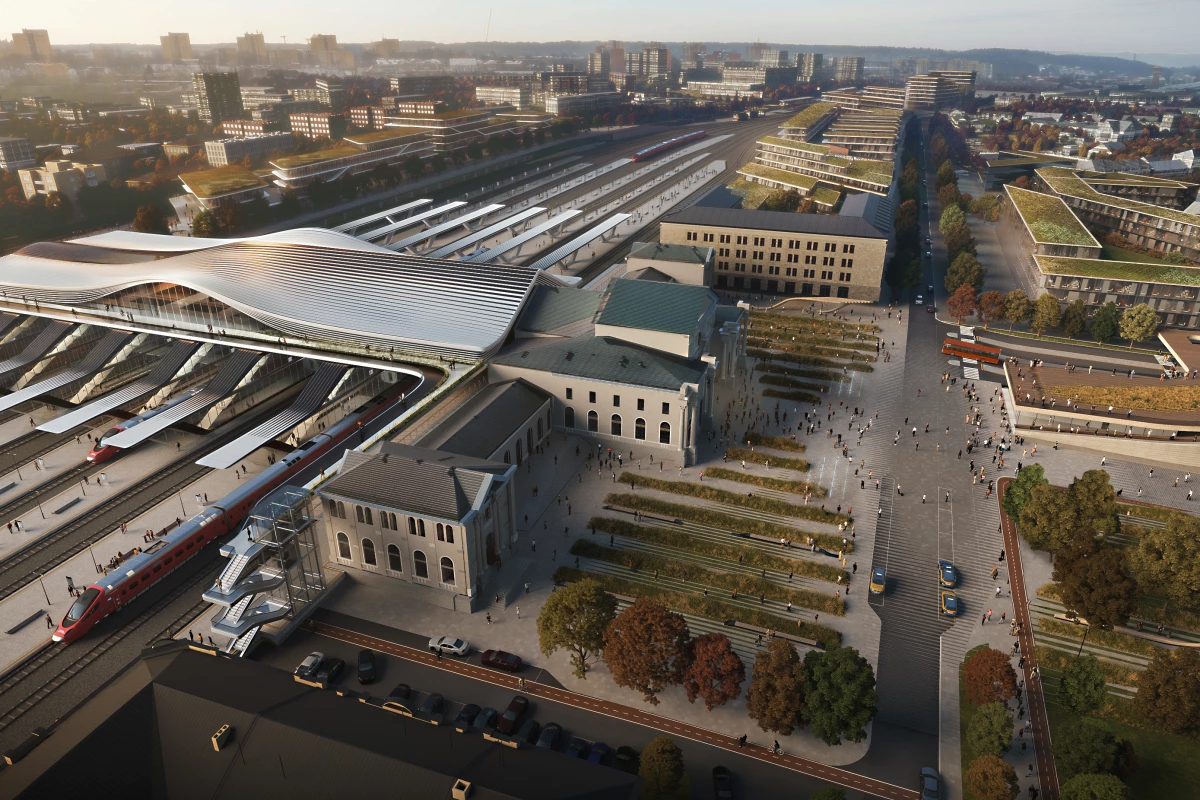Zaha Hadid Architects has designed a number of train stations in recent years, including examples in Estonia, Italy, Russia, and elsewhere. Its latest project sees the high-profile firm envision the renovation of a railway station in Lithuania, while adding a bridge and new green spaces, and improving energy efficiency.
Assuming the project goes ahead, itmaki will be centered around renovating the train station in the country's capital Vilnius, as well as the construction of a connecting pedestrian bridge spanning 150 m (492 ft) in length. This bridge will have a contemporary overall form in typical ZHA style, which riffs on the adjacent station with a pitched roof, while also incorporating curving lines and skylights. It will be used to improve access between two nearby neighborhoods that are divided by the rail lines.
However, the project's official name of Green Connect references a wider focus on nature (landscaping duties are being handled by Land) in the surrounding area. An existing car park will be relocated underground to create space for a new public park area with over 300 new trees and extensive landscaping, including tree-lined avenues and water gardens.
"Nature-based solutions are integral to the design," explains Zaha Hadid Architects. "Green roofs, landscaping and planting will lower temperatures in summer and provide heat insulation in the winter. Creating an interconnected series of natural habitats within the city, these urban green spaces are easily accessible and can be enjoyed by communities throughout the year to enhance wellbeing and interaction."

All that greenery will be complemented by some green tech and design. Solar radiation analysis has been performed to ensure the facades of the train station will maximize sunlight in winter, while still mitigating glare in the summer. Additionally, solar panels will reduce the facility's draw on the power grid and rainwater will be collected and filtered for use (presumably for irrigation and flushing toilets etc, though this isn't specified). The new bridge's roof structure and a planned bus terminal will also be constructed from locally sourced laminated timber.
Green Connect was recently chosen as the winner of an international architecture competition. We've no word yet on whether or not it has been given the thumbs-up to go ahead, though the local mayor seems enthusiastic.
"We are working to ensure that the entire station district, including the railway station, bus station, public transport terminal and square, meets the criteria for the city we are developing today: green, comfortable and inspiring," says Vilnius Mayor Remigijus Šimašius. "We are already investing in the surrounding spaces and are ready to invest even more in the square, the streets and the new, more comfortable and greener face of Vilnius."
Source: Zaha Hadid Architects







